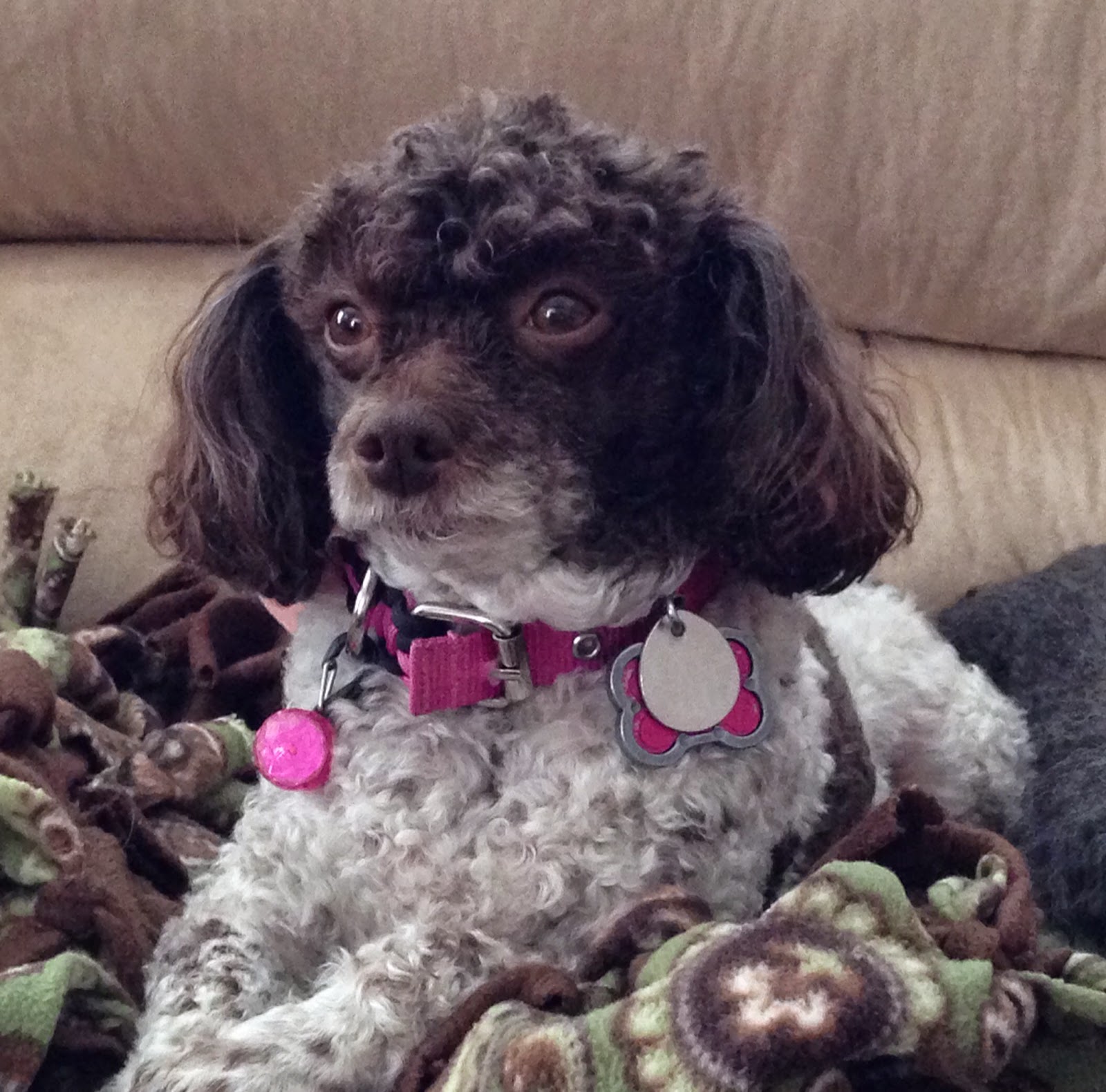Ensure your pet has had his/her preventive care
exam (wellness exam). Cold weather may worsen some medical conditions
such as arthritis. Your pet should be examined by a veterinarian at least once
a year, and it’s as good a time as any to get him/her checked out to make sure
(s)he is ready and as healthy as possible for cold weather.
Just like people, pets’ cold tolerance can vary
from pet to pet based on their coat, body fat stores, activity level, and
health. You will probably need to shorten your dog’s walks in very cold weather
to protect you both from weather-associated health risks. Arthritic and elderly
pets may have more difficulty walking on snow and ice and may be more prone to
slipping and falling. Long-haired or thick-coated dogs tend to be more
cold-tolerant, but are still at risk in cold weather. Short-haired pets feel
the cold faster because they have less protection, and short-legged pets may
become cold faster because their bellies and bodies are more likely to come
into contact with snow-covered ground.
Just like
you, pets prefer comfortable sleeping places and may change their location
based on their need for more or less warmth. Give them some safe options to
allow them to vary their sleeping place to adjust to their needs.
Cats and
dogs should be kept inside during cold weather. It’s a common belief that dogs
and cats are more resistant than people to cold weather because of their fur,
but it’s untrue. Like people, cats and dogs are susceptible to frostbite and
hypothermia and should be kept inside.
Check your dog’s paws frequently for signs of
cold-weather injury or damage, such as cracked paw pads or bleeding. During a
walk, a sudden lameness may be due to an injury or may be due to ice
accumulation between his/her toes. You may be able to reduce the chance of
iceball accumulation by clipping the hair between your dog’s toes.
If your dog has a short coat or seems bothered by
the cold weather, consider a sweater or dog coat. Have several on hand, so you
can use a dry sweater or coat each time your dog goes outside. Wet sweaters or
coats can actually make your dog colder.
During walks, your dog’s feet, legs and belly may
pick up deicers, antifreeze, or other chemicals that could be toxic. When you
get back inside, wipe down (or wash) your pet’s feet, legs and belly to remove
these chemicals and reduce the risk that your dog will be poisoned after (s)he
licks them off of his/her feet or fur.
Many pets become lost in winter because snow and
ice can hide recognizable scents that might normally help your pet find his/her
way back home. Make sure your pet has a well-fitting collar with up-to-date
identification and contact information. A microchip is a more permanent means
of identification, but it’s critical that you keep the registration up to date.
Hot cars are a known threat to pets, but cold cars
also pose significant risk to your pet’s health. You’re already familiar with
how a car can rapidly cool down in cold weather; it becomes like a
refrigerator, and can rapidly chill your pet. Pets that are young, old, ill, or
thin are particularly susceptible to cold environments and should never be left
in cold cars.
Odds are your pet will be spending more time inside
during the winter, so it’s a good time to make sure your house is properly pet-proofed.
Use space heaters with caution around pets, because they can burn or they can
be knocked over, potentially starting a fire. Check your furnace before the
cold weather sets in to make sure it’s working efficiently, and install carbon
monoxide detectors to keep your entire family safe from harm.
We don’t recommend keeping any pet outside for long
periods of time, but if you are unable to keep your dog inside during cold
weather, provide him/her with a warm, solid shelter against wind. Make sure that
they have unlimited access to fresh, non-frozen water (by changing the water
frequently or using a pet-safe, heated water bowl). The floor of the shelter
should be off of the ground (to minimize heat loss into the ground) and the
bedding should be thick, dry and changed regularly to provide a warm, dry
environment. The door to the shelter should be positioned away from prevailing
winds.
If your pet is whining, shivering, seems anxious,
slows down or stops moving, seems weak, or starts looking for warm places to
burrow, get them back inside quickly because they are showing signs of
hypothermia. Frostbite is harder to detect, and may not be fully recognized
until a few days after the damage is done. If you suspect your pet has
hypothermia or frostbite, consult your veterinarian immediately.
Cold weather also brings the risks of severe winter
weather, blizzards and power outages. Prepare a disaster/emergency kit, and
include your pet in your plans. Have enough food, water and medicine (including
any prescription medications as well as heartworm and flea/tick preventives) on
hand to get through at least 5 days.
Keep your pet at a healthy weight throughout the
winter. Some pet owners feel that a little extra weight gives their pet some
extra protection from cold, but the health risks associated with that extra
weight don’t make it worth doing. Watch your pet’s body condition and keep them
in the healthy range. Outdoor pets will require more calories in the winter to
generate enough body heat and energy to keep them warm – talk to your
veterinarian about your pet’s nutritional needs during cold weather.
Keep Dancin’ Larry B









